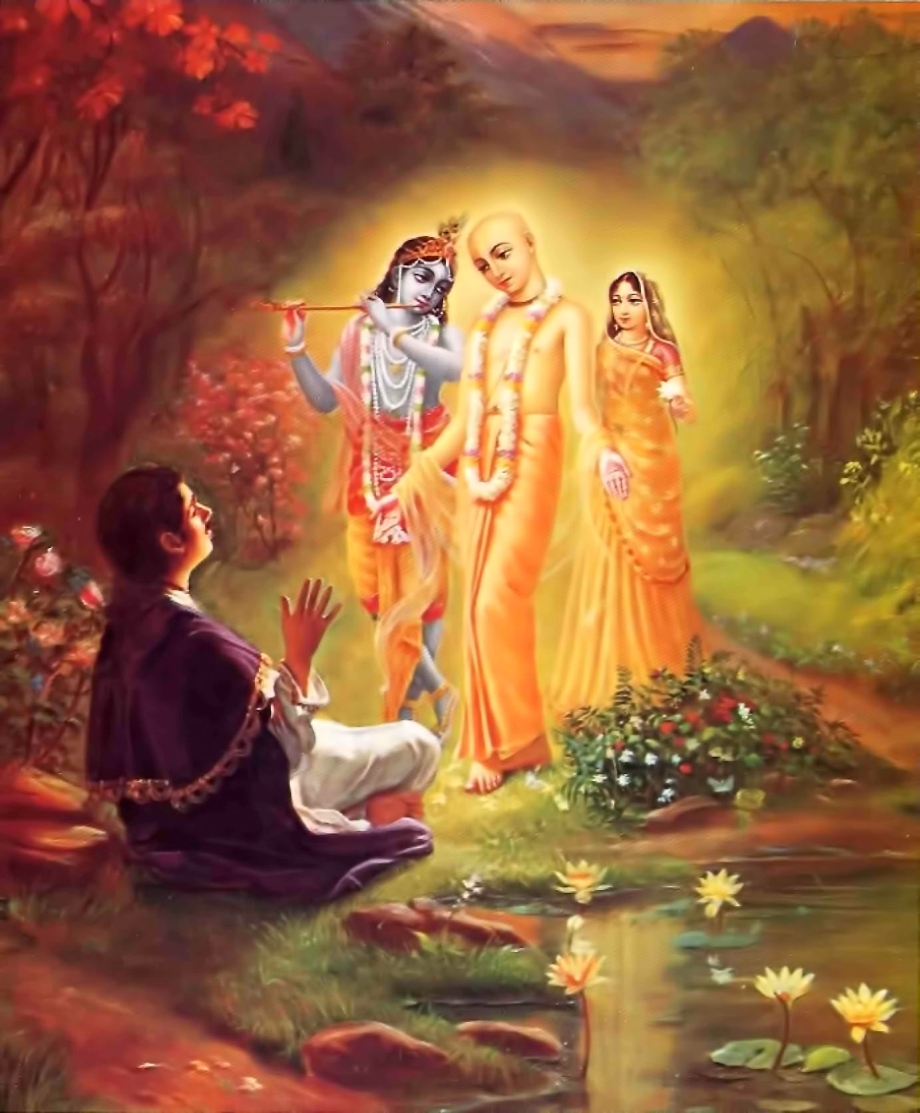So I´ve been a bad boy and read the craziest chapters
of the Chaitanya-Charitamrita by Krishnadasa Kaviraja, while completely
disregarding all the others. But then, I only read the rasa-lila chapters of
the Shrimad Bhagavatam, so what´s the surprise?
The 16th century Indian mystic and ecstatic
Krishna Chaitanya, Sri Chaitanya Mahaprabhu or simply Chaitanya (also spelled Caitanya)
was the founder of the so-called Gaudiya Vaishnava tradition. Today, this particular
form of Hinduism is most famously (and notoriously) represented by the ISKCON,
better known as the Hare Krishna movement. It recently struck me that the term “Krishna
Consciousness” might be a kind of pun, referring to the name Krishna Chaitanya!
My Sanskrit is a bit rusty, but I think the name actually means something like…well,
Krishna Consciousness. Note also the letters “KC” in the abbreviation, hmmm, I
wonder what other puns or secret codes might be in there?
Krishnadasa Kaviraja never met Chaitanya, but he was
on a first name basis with some of his disciples. For some reason, the ISKCON considers
his hagiographical work Chaitanya-Charitamrita to be the most important and canonical
of the various Chaitanya biographies in existence. My guess is that the work
has a theological slant which is perhaps lacking in earlier expositions. One
thing that struck me when “reading” it (well, a couple of chapters anyway) is
that it´s borderline heterodox. It emphasizes the absolutely unique character of
Chaitanya, who is said to be a double incarnation of Krishna and Radha in one
body. God has entered the world as his own best devotee, not just to teach fallen
humanity how to worship Him, but literally to taste the sweet love of the
devotees, something God somehow cannot do otherwise! There are also verses
explicitly saying that some of Chaitanya´s “pastimes”, in this case his
ecstatic trances, were so extreme that not even the Vedas or dharma-shastras
mention such things. A remarkable statement (I think) in a Hindu context, but
here presumably being further evidence that Chaitanya really is a divine
incarnation.
And yes, about those ecstasies…
At one point, Chaitanya disappeared from a bolted and
locked room. His disciples found him laying on the ground motionless a bit
further away, but his body had been unnaturally elongated. At another point,
the disciples found him being eagerly licked by cows, once again motionless,
with his limbs withdrawn into the body, like the limbs of a tortoise?! Which
is, of course, quite impossible – unless we are talking about a miracle. At yet
another point, he laid unconscious in the water for hours. Angry critics claim
that Chaitanya must have been an epileptic, and that his divine madness were really
seizures. Never heard of no epileptic elongating his body, though…
During his fits of divine ecstasy, Chaitanya directly
experienced Krishna´s amorous pastimes with Radha and the gopis, but also the
intense sorrow of Radha when she parts with the Lord, the mad desire of the
gopis at hearing Krishna´s flute, and so on. (Yes, that flute is described in
pretty wild terms!) The mysticism of Gaudiya Vaishnavism has a strong erotic flavor.
It´s not really “conjugal love” (as the ISKCON translators has it) but precisely
*not* conjugal love, rather being the illicit love of the human soul for God. Since
Chaitanya is really Krishna, the above means that Krishna is experiencing the
devotees´ longing, desire and love for Himself in the body of a human. An
intriguing idea, to be sure!
Another peculiar story told is about Kalidasa, a
future disciple of Chaitanya, who ate leftover food of “all the Vaishnavas in
Bengal”, presumably all high-ranking Vaishnavas (i.e. worshippers of Vishnu – Krishna
and Vishnu are believed to be two forms of the same god). Leftovers should be
interpreted quite literally here. Kalidasa licked the leaves used by Vaishnavas
as dishes after they had eaten their food. After Kalidasa had visited the house
of Jhadu Thakura, a prominent Vaishnava who was a shudra (low caste), he hid
outside the master´s house and patiently waited until Thakura´s wife threw out the
peels from mangoes stealthily offered by Kalidasa to Thakura at an earlier
point. He would then grab the peels and lick them! This antinomian behavior is
pregnant with meaning: sharing food is an important social ritual in Hindu culture,
which means that Brahmins aren´t supposed to share food with low-caste people.
Indeed, shudras aren´t even allowed to study the Vedas. Yet, here a disciple of
Chaitanya eats the literal leftovers of food offered to a shudra who evidently
does study the Vedas. (I assume both Chaitanya and Kalidasa were Brahmins.) Not
sure if the secret way in which Kalidasa offers the mangoes and then eat the
leftovers has some symbolic significance, since Thakura warned Kalidasa not to
share food with him (because Thakura was a mere shudra).
A curious aspect of the Chaitanya-Charitamrita is that
it never mentions the death (or disappearance) of Chaitanya. I´m not even sure
whether the Gaudiya Vaishnava tradition has an official version of what happened
to their founder. Perhaps it isn´t even important, since Chaitanya was God rather
than an ordinary mortal?
Thus ends my completely disjointed reflections on this
work.

No comments:
Post a Comment